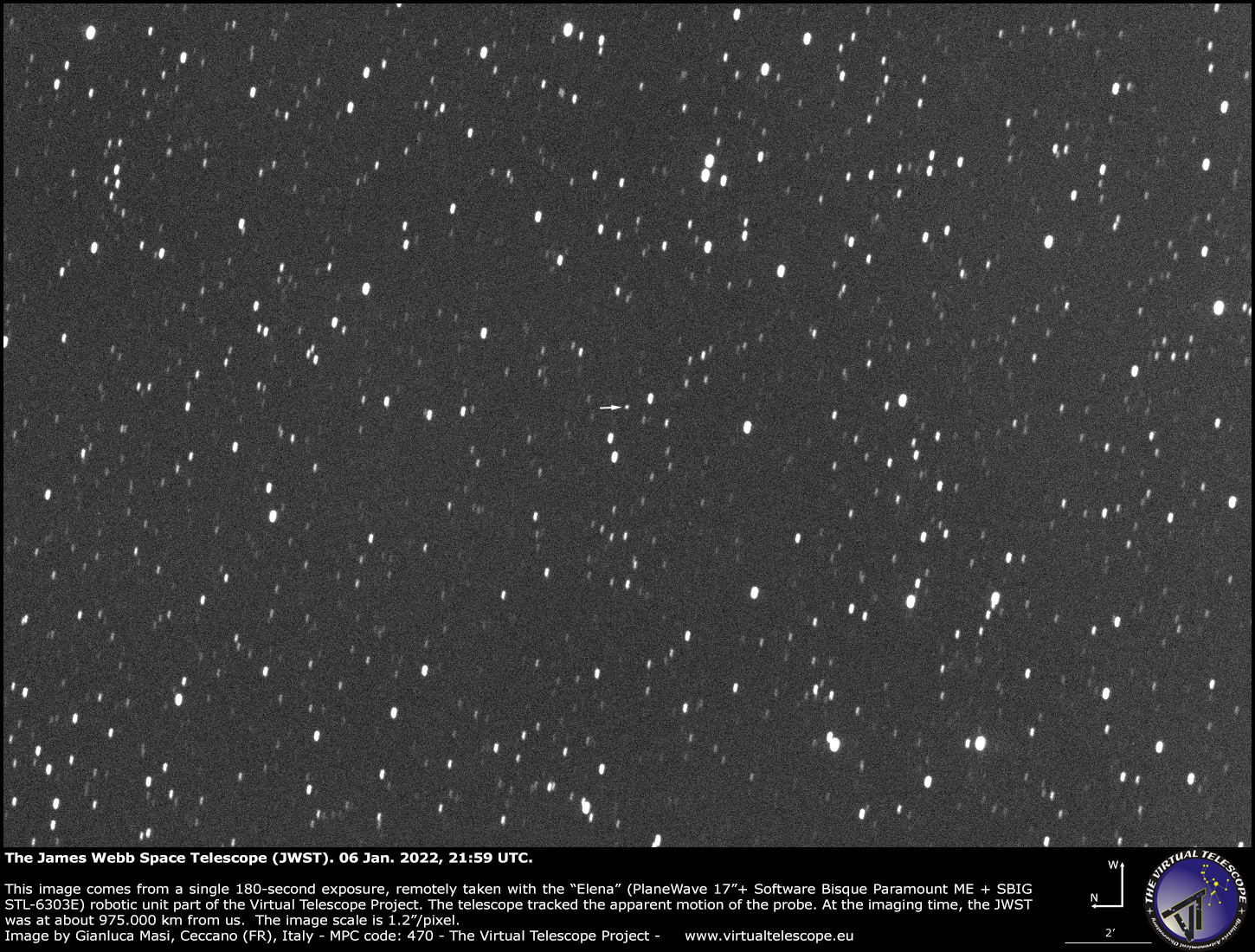Watch the James Webb Space Telescope soar through space in this livestream Saturday
The Virtual Telescope Project's webcast begins at 5:30 p.m. EST (2230 GMT).
Update: This livestream has been delayed by 24 hours due to clouds blocking the telescope's view. It is now scheduled to begin on Saturday (Jan. 8) at 5:30 p.m. EST (2230 GMT).
Catch a livestream of the James Webb Space Telescope as it zips towards its celestial perch today (Jan. 7).
Starting at 4:30 p.m. EST (2130 GMT), astrophysicist Gianluca Masi of the Virtual Telescope Project in Italy will stream live telescope views of the James Webb Space Telescope. You can watch the webcast live in the window above, courtesy of the Virtual Telescope Project, or you can watch it on YouTube.
Webb is a $10 billion mission to study the universe's history like never before possible. This collaboration between NASA, the European Space Agency and the Canadian Space Agency was the result of decades of planning and withstood years of delays. The spacecraft finally launched from Europe's Spaceport in Kourou, French Guiana on Dec. 25, 2021, and is currently on its way to its destination.
Live updates: NASA's James Webb Space Telescope mission
Related: How the James Webb Space Telescope works in pictures
The space telescope will make celestial observations from a special gravitationally-stable place in the solar system called Lagrange Point 2 (L2), located nearly 1 million miles (1.5 million kilometers) away from Earth. The mission has been successfully completing new stages in its observational preparations, unfolding its mirrors and sunshield as it journeys to this distant post. As of this morning Webb was already more than 644,000 miles (1 million km) away from our planet.
To view the space telescope zipping through space, enthusiasts can watch a live feed provided by the Virtual Telescope Project. Masi helms this online platform, offering views of his ground-based tracking telescopes and providing commentary of space events.
Breaking space news, the latest updates on rocket launches, skywatching events and more!
Masi makes observations from Ceccano, Italy, located about 56 miles (90 km) south of Rome. Viewers can expect to see footage of the space telescope, which will look like a small white speck, flying past a sea of background stars.
From L2, Webb will be able to peer through the universe in depth, helping scientists learn about the earliest moments of the universe and providing a better understanding of Earth's own cosmic neighborhood.
Follow Doris Elin Urrutia on Twitter @salazar_elin. Follow us on Twitter @Spacedotcom and on Facebook.

Doris is a science journalist and Space.com contributor. She received a B.A. in Sociology and Communications at Fordham University in New York City. Her first work was published in collaboration with London Mining Network, where her love of science writing was born. Her passion for astronomy started as a kid when she helped her sister build a model solar system in the Bronx. She got her first shot at astronomy writing as a Space.com editorial intern and continues to write about all things cosmic for the website. Doris has also written about microscopic plant life for Scientific American’s website and about whale calls for their print magazine. She has also written about ancient humans for Inverse, with stories ranging from how to recreate Pompeii’s cuisine to how to map the Polynesian expansion through genomics. She currently shares her home with two rabbits. Follow her on twitter at @salazar_elin.

